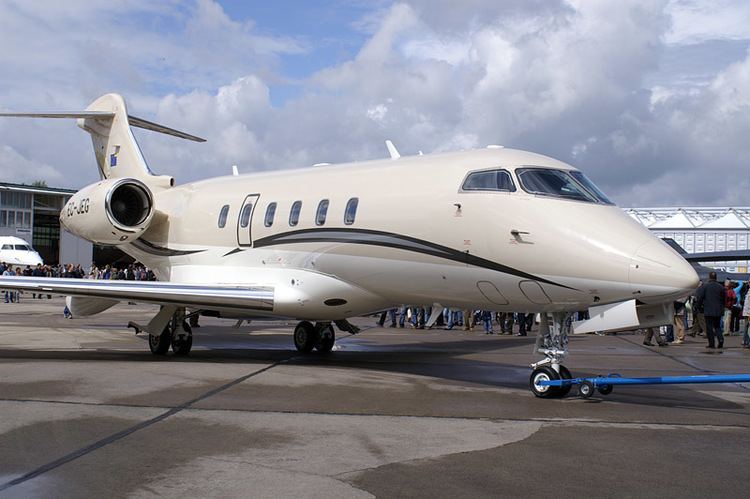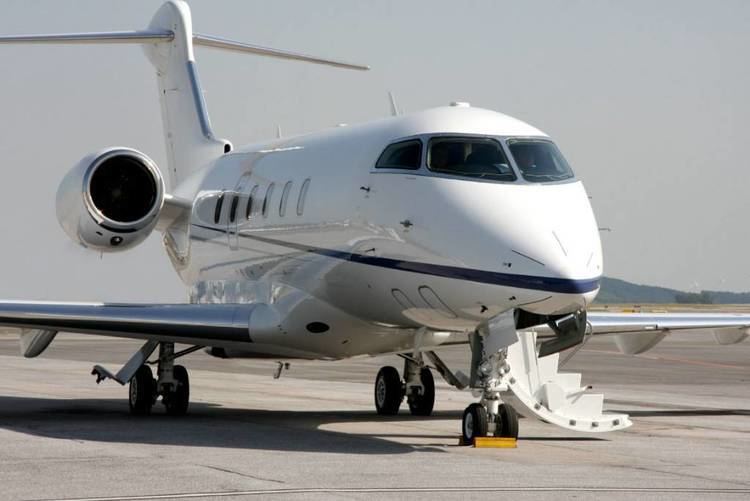Range 5,741 km Top speed 891 km/h Cruise speed 871 km/h | Wingspan 19 m Length 21 m Engine type Honeywell HTF7000 | |
 | ||
Unit cost 26,673,000–26,673,000 USD (2015), 20,000,000–20,000,000 USD (2008) | ||
Bombardier challenger 300 g leaz close up departure gloucestershire airport
The Bombardier BD-100 Challenger 300 is a super-mid-sized jet capable of traversing transcontinental distances. It is not developmentally related to the similarly named Challenger 600 series, or the 600-derived Challenger 800 series.
Contents
- Bombardier challenger 300 g leaz close up departure gloucestershire airport
- Design and development
- Variants
- Specifications Challenger 300
- References

Design and development

The project was launched at the Paris Air Show on July 13, 1999, at which time it was called the Bombardier Continental. It was a "clean sheet" design, assembled in Bombardier's Learjet plant at Wichita Mid-Continent airport, Kansas. The jet was renamed in September 2002 after much debate about which category (Learjet, Challenger, or Global) the new aircraft fit into. It entered commercial service in January 2004.
Variants

Specifications (Challenger 300)
Data from Bombardier
General characteristics

Performance

Avionics
References
Bombardier Challenger 300 Wikipedia(Text) CC BY-SA
